How to bury the dead: elimination of apoptotic hair cells from the hearing organ of the mouse
- PMID: 25074370
- PMCID: PMC4389953
- DOI: 10.1007/s10162-014-0480-x
How to bury the dead: elimination of apoptotic hair cells from the hearing organ of the mouse
Abstract
Hair cell death is a major cause of hearing impairment. Preservation of surface barrier upon hair cell loss is critical to prevent leakage of potassium-rich endolymph into the organ of Corti and to prevent expansion of cellular damage. Understanding of wound healing in this cytoarchitecturally complex organ requires ultrastructural 3D visualization. Powered by the serial block-face scanning electron microscopy, we penetrate into the cell biological mechanisms in the acute response of outer hair cells and glial-like Deiters' cells to ototoxic trauma in vivo. We show that Deiters' cells function as phagocytes. Upon trauma, their phalangeal processes swell and the resulting close cellular contacts allow engulfment of apoptotic cell debris. Apical domains of dying hair cells are eliminated from the inner ear sensory epithelia, an event thought to depend on supporting cells' actomyosin contractile activity. We show that in the case of apoptotic outer hair cells of the organ of Corti, elimination of their apices is preceded by strong cell body shrinkage, emphasizing the role of the dying cell itself in the cleavage. Our data reveal that the resealing of epithelial surface by junctional extensions of Deiters' cells is dynamically reinforced by newly polymerized F-actin belts. By analyzing Cdc42-inactivated Deiters' cells with defects in actin dynamics and surface closure, we show that compromised barrier integrity shifts hair cell death from apoptosis to necrosis and leads to expanded hair cell and nerve fiber damage. Our results have implications concerning therapeutic protective and regenerative interventions, because both interventions should maintain barrier integrity.
Figures
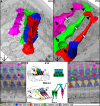
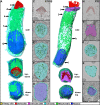
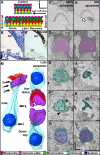


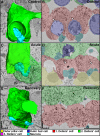

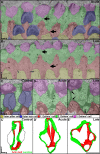

References
Publication types
MeSH terms
Substances
LinkOut - more resources
Full Text Sources
Other Literature Sources
Miscellaneous

